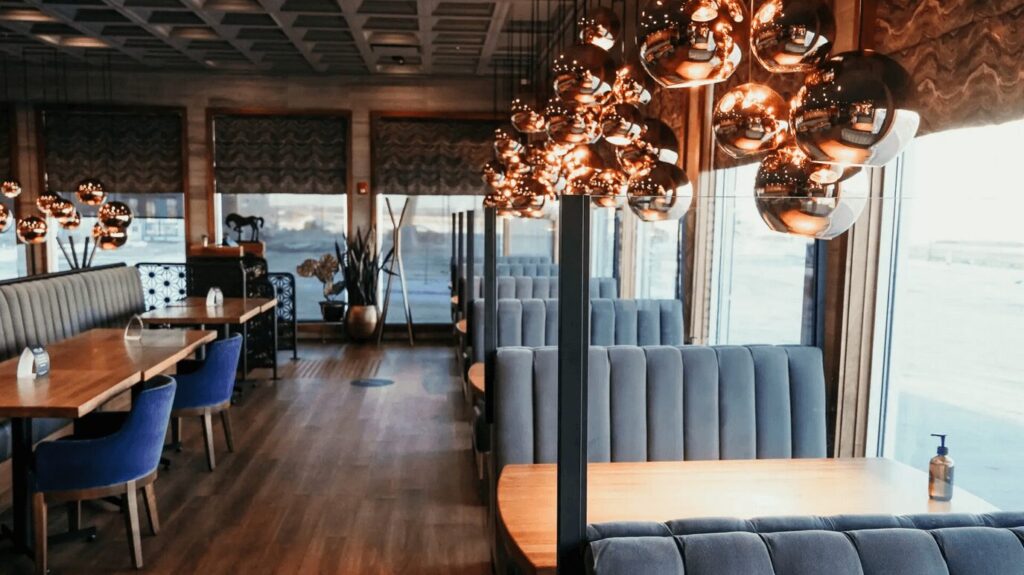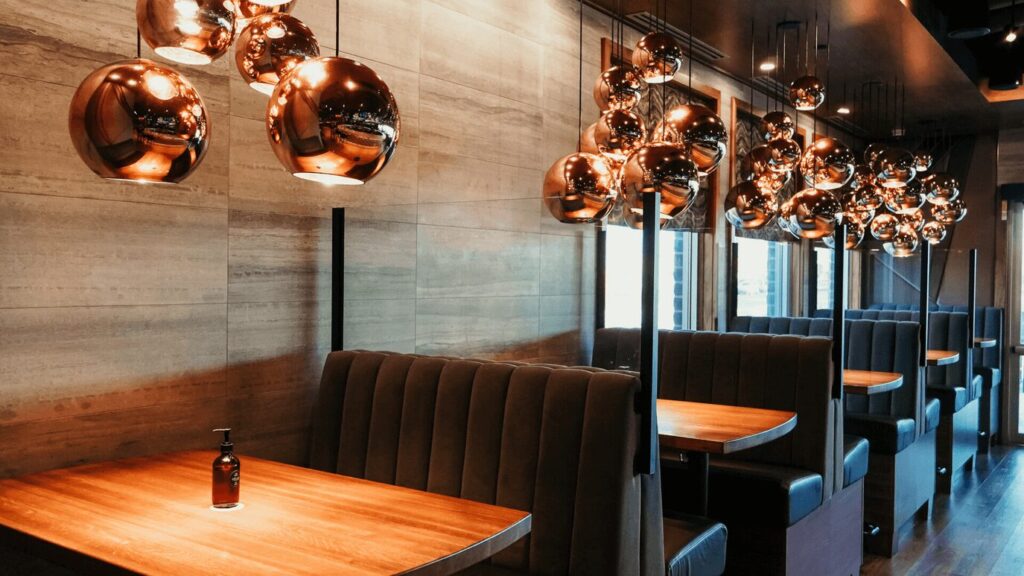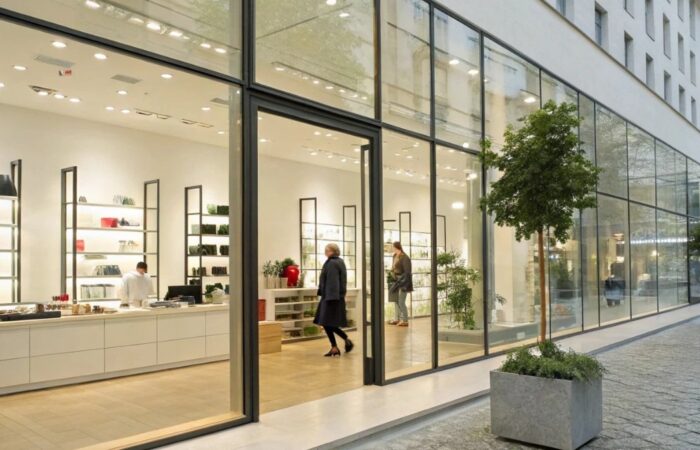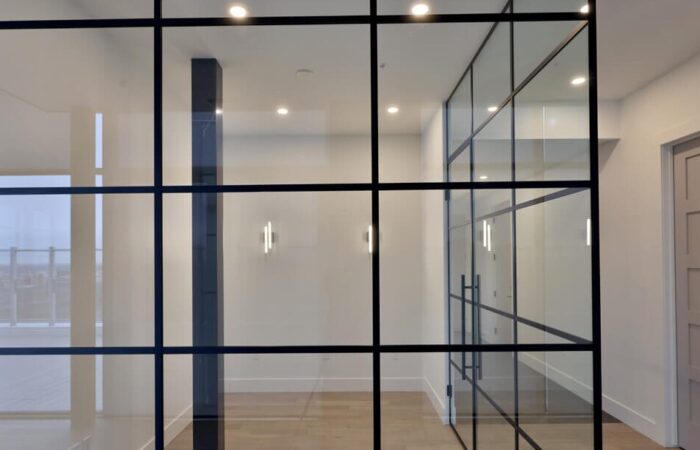
The restaurant and hospitality industry faces a unique challenge: creating visually stunning spaces that captivate guests while adhering to strict health and safety regulations. Glass design has emerged as a powerful solution that bridges this gap, offering establishments the opportunity to craft memorable dining experiences without compromising on cleanliness, safety, or regulatory compliance.
Modern diners expect more than just exceptional food and service—they seek immersive environments that tell a story and create lasting memories. Glass installations have become instrumental in meeting these expectations, transforming ordinary spaces into extraordinary destinations that leave guests eager to return and share their experiences.
The Role of Glass in Modern Restaurant Design
Glass has revolutionized restaurant interiors by offering unparalleled versatility in both form and function. Unlike traditional building materials, glass can simultaneously serve multiple purposes: creating visual separation while maintaining openness, enhancing natural light distribution, and providing surfaces that are both beautiful and highly sanitary.
Contemporary restaurant design increasingly relies on glass elements to achieve specific atmospheric goals. The material’s transparency allows for creative lighting effects that can dramatically alter a space’s mood throughout the day, while its reflective properties can make smaller spaces appear larger and more inviting.
The psychological impact of glass in dining environments cannot be understated. Transparent barriers create intimate dining nooks without the claustrophobic feeling of solid walls, while frosted or tinted glass options provide privacy when needed. This flexibility makes glass an ideal choice for restaurants that need to adapt their spaces for different occasions, from casual lunch service to intimate dinner experiences.
Key Health Regulations Affecting Restaurant Glass Design
Understanding health department requirements is crucial for any restaurant’s glass installation. The food service industry operates under strict guidelines that govern everything from surface materials to cleaning protocols, and glass elements must comply with these regulations to avoid costly violations or health hazards.
Health codes typically address several critical areas when it comes to glass installations:
- Surface cleanability and sanitization requirements
- Chemical resistance standards for cleaning products
- Temperature resistance for areas exposed to heat
- Structural integrity in high-traffic environments
- Compliance with local fire safety codes
Local health departments may have additional requirements specific to your region, including specifications for glass thickness, safety ratings, or installation methods. These regulations often vary between jurisdictions, making it essential to consult with local authorities before beginning any major glass installation project.
Safety Glass Requirements in Commercial Settings
Commercial restaurant environments demand glass products that meet stringent safety standards. The type of safety glass required depends on the specific application and location within the establishment, with different areas requiring different levels of protection.
Tempered glass is the most commonly specified safety glass for restaurant applications. This type of glass undergoes a special heat treatment process that makes it approximately four times stronger than standard glass. When tempered glass does break, it crumbles into small, relatively harmless pieces rather than creating dangerous, sharp shards.
Laminated glass offers another safety option, particularly valuable in applications where maintaining the integrity of a barrier is crucial even after impact. This glass type consists of multiple layers bonded with a plastic interlayer that holds the glass together if broken, preventing pieces from falling and potentially injuring staff or customers.
For areas subject to thermal stress, such as spaces near kitchen equipment or areas with significant temperature variations, heat-resistant glass formulations ensure long-term performance without cracking or failure. These specialized glass types maintain their structural integrity even when exposed to rapid temperature changes that might compromise standard glass.
Building codes often specify minimum safety requirements for glass installations based on factors such as:
- Height from floor level
- Proximity to walking surfaces
- Size of glass panels
- Location relative to doors and walkways
- Potential for human impact
Creating Ambiance Through Strategic Glass Placement
The strategic placement of glass elements can dramatically transform a restaurant’s atmosphere, creating distinct zones that enhance the dining experience while supporting operational efficiency. Understanding how glass interacts with light, space, and human psychology is key to creating truly memorable environments.
Natural light management through glass positioning can significantly impact energy costs while creating appealing dining environments. Large glass panels positioned to maximize morning light can create bright, welcoming breakfast spaces, while strategically placed tinted glass can provide comfortable afternoon dining areas without excessive glare.
Acoustic considerations play a crucial role in glass placement decisions. While glass surfaces can reflect sound, properly positioned glass elements can help direct noise away from quiet dining areas or create sound barriers between different sections of a restaurant. The thickness and type of glass selected can influence its acoustic properties, with laminated glass offering superior sound dampening compared to standard tempered glass.
Visual connectivity between different areas of a restaurant can enhance the overall dining experience. Glass partitions allow guests to observe the energy of a bustling dining room while maintaining intimate conversation spaces. Open kitchen concepts benefit significantly from glass barriers that provide visual access to food preparation while containing cooking aromas and sounds.
Types of Glass Suitable for Restaurant Applications
Selecting the appropriate glass type for each application ensures both aesthetic appeal and long-term performance in demanding restaurant environments. Different areas of a restaurant may require different glass specifications based on their specific challenges and requirements.
Clear Tempered Glass. This versatile option works well for most restaurant applications, offering maximum light transmission while meeting safety requirements. Clear tempered glass is ideal for display cases, serving counters, and general partition applications where transparency is desired.
Low-Iron Glass For applications requiring exceptional clarity, low-iron glass eliminates the slight green tint found in standard glass. This premium option is particularly valuable for display applications or areas where colour accuracy is important, such as wine storage displays or food presentation areas.
Frosted and Etched Glass Privacy applications benefit from frosted or etched glass options that obscure vision while maintaining light transmission. These treatments can be applied uniformly or in decorative patterns that complement the restaurant’s design theme.
Tinted Glass Heat and glare control applications often benefit from tinted glass options that reduce solar heat gain while maintaining visibility. Bronze, gray, and blue tints are commonly available, each offering different aesthetic and performance characteristics.
Digital Print Glass Custom graphics, logos, or decorative patterns can be permanently applied to glass surfaces through digital printing processes. This technology allows restaurants to incorporate branding elements directly into their glass installations while maintaining the durability required for commercial applications.
Cleaning and Maintenance Protocols for Health Compliance

Maintaining glass installations in restaurant environments requires systematic cleaning protocols that ensure both aesthetic appeal and health code compliance. The frequency and methods used for glass cleaning must align with health department requirements while preserving the glass’s appearance and performance.
Daily cleaning protocols should address all glass surfaces that may come into contact with food particles, grease, or other contaminants. High-touch surfaces like door glass and partition panels require more frequent attention, often necessitating cleaning multiple times throughout service periods.
Approved cleaning products for restaurant glass must be compatible with food service environments and should not leave residues that could affect food safety. Many commercial glass cleaners are formulated specifically for restaurant use, offering effective cleaning power while meeting food safety requirements.
Staff training on proper glass cleaning techniques ensures consistent results and helps prevent damage to glass surfaces. Training should cover:
- Appropriate cleaning products for different types of glass
- Proper cleaning tool selection to avoid scratching
- Recognition of damage that might compromise safety
- Documentation requirements for health inspections
- Emergency procedures for glass breakage
Design Considerations for Kitchen and Service Areas
Glass applications in kitchen and service areas face unique challenges that require specialized consideration. These high-activity zones demand glass solutions that can withstand constant use while maintaining the sanitary conditions required for food preparation and service.
Heat exposure in kitchen areas necessitates careful glass selection and placement. Standard glass can fail when exposed to rapid temperature changes or sustained high temperatures, making heat-resistant formulations essential for applications near cooking equipment. Proper ventilation and spacing from heat sources help ensure long-term performance.
Grease resistance becomes critical in areas where cooking vapours are present. While all glass surfaces can be cleaned of grease accumulation, some treatments and textures are more susceptible to staining or may require more intensive cleaning procedures to maintain appearance.
Pass-through windows and service openings require glass that can withstand repeated opening and closing while maintaining alignment and seal integrity. Heavy-duty hardware and properly sized glass panels ensure smooth operation even under constant use conditions.
Visibility requirements in kitchen areas often conflict with privacy needs. Frosted glass sections can provide privacy for certain preparation areas while maintaining overall transparency for supervision and coordination purposes. Strategic placement of opaque and transparent sections creates functional work environments that meet operational needs.
Cost-Benefit Analysis of Glass Installation Projects
Understanding the financial implications of glass installation projects helps restaurant owners make informed decisions about design investments. While initial costs for quality glass installations can be significant, the long-term benefits often justify the investment through improved customer experiences and operational efficiencies.
Initial installation costs vary significantly based on glass type, size, complexity, and local labour rates. Premium glass options and custom fabrication requirements increase upfront expenses but often provide superior performance and aesthetics that support higher pricing strategies and customer satisfaction levels.
Energy efficiency benefits from glass installations can provide ongoing cost savings through reduced lighting and HVAC expenses. Strategic glass placement that maximizes natural light reduces artificial lighting needs during daylight hours, while insulated glass units can improve thermal performance and reduce heating and cooling costs.
Maintenance and replacement costs should be factored into long-term budgets. While glass installations generally require minimal maintenance, eventual replacement may be necessary due to damage, wear, or design updates. Quality installations with proper maintenance typically provide decades of service life.
Return on investment through improved customer experiences can be substantial but challenging to quantify. Enhanced ambiance often translates to increased customer satisfaction, longer visit durations, and higher spending per visit. Social media sharing of visually striking spaces can provide valuable marketing benefits that extend the investment’s value beyond the physical space.
Working with Professional Glass Installers
The complexity of restaurant glass installations typically requires professional expertise to ensure both aesthetic success and regulatory compliance. Selecting qualified installers with experience in commercial hospitality projects is crucial for achieving desired results while avoiding costly mistakes or code violations.
Certification and licensing requirements vary by location, but reputable glass installers should carry appropriate trade certifications and maintain current licensing for commercial construction work. Professional certifications demonstrate competency in safety standards, installation techniques, and industry best practices.
Experience with restaurant and hospitality projects provides installers with knowledge of industry-specific requirements and challenges. Experienced professionals understand health code implications, durability requirements, and design considerations unique to food service environments.
Project planning and coordination with other trades becomes essential in restaurant construction or renovation projects. Glass installation often requires coordination with electrical, plumbing, and HVAC systems, making communication and scheduling crucial for successful project completion.
Warranty and service support from professional installers protects the investment and ensures ongoing performance. Quality installers typically offer warranties on both materials and workmanship, providing peace of mind and protection against defects or installation issues.
Conclusion
Restaurant and hospitality glass design represents a perfect intersection of form and function, offering establishments powerful tools for creating memorable experiences while maintaining the highest standards of health and safety. The versatility of modern glass products and installation techniques allows restaurants to achieve virtually any design vision while meeting regulatory requirements and operational demands.
Success in restaurant glass design requires careful consideration of multiple factors: regulatory compliance, safety requirements, aesthetic goals, maintenance needs, and budget constraints. When these elements are properly balanced through professional planning and installation, glass elements can transform ordinary spaces into extraordinary destinations that captivate guests and support business success.
The investment in quality glass installations pays dividends through enhanced customer experiences, improved operational efficiency, and distinctive branding opportunities. As the hospitality industry continues to evolve, glass design will undoubtedly remain a cornerstone of innovative restaurant environments that balance beauty with practicality.
Ready to transform your restaurant or hospitality space with custom glass solutions? Professional glass installers at Red Seal Glass with expertise in commercial projects can help you navigate health regulations while creating stunning environments that captivate your guests. Contact Red Seal Glass today to explore how strategic glass design can elevate your establishment and create the memorable experiences that keep customers returning.

